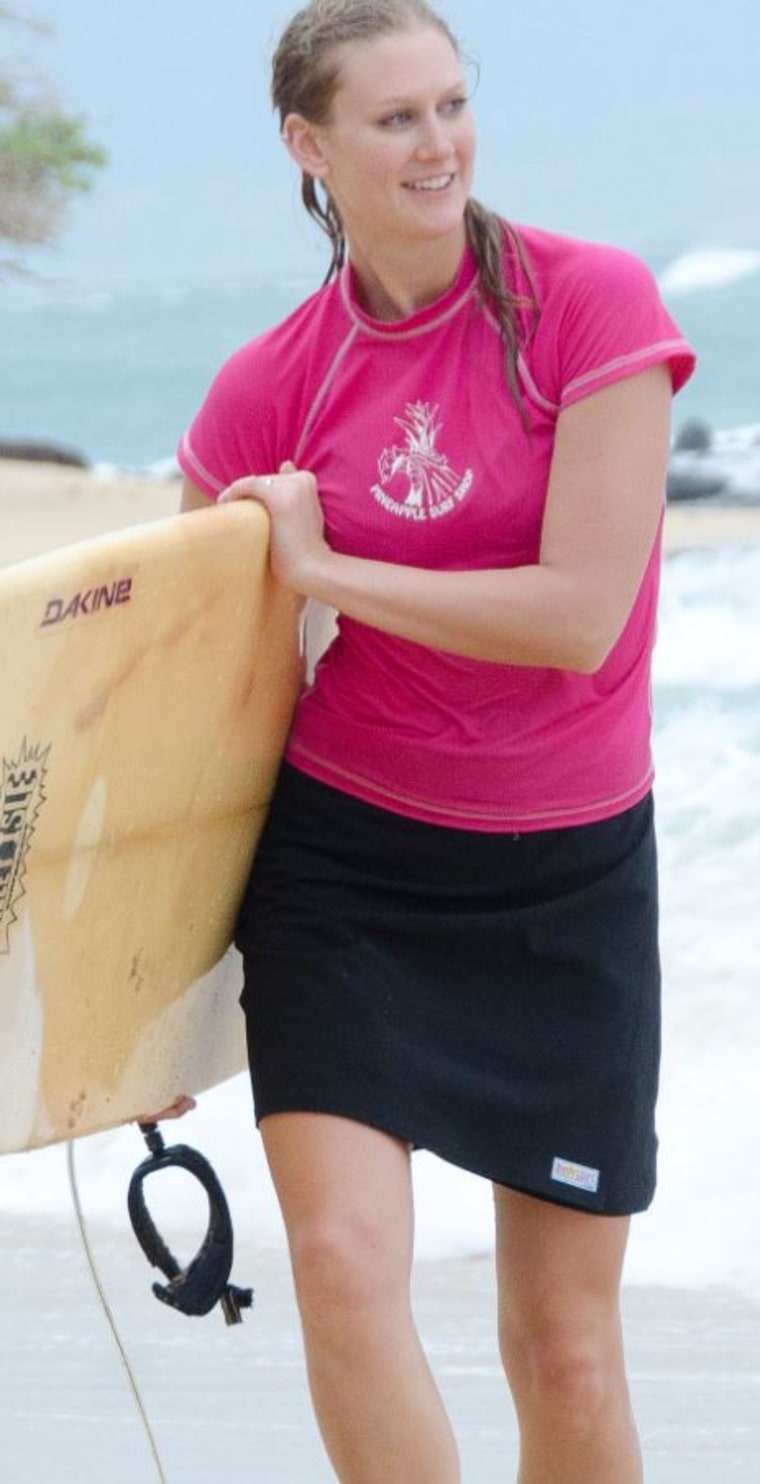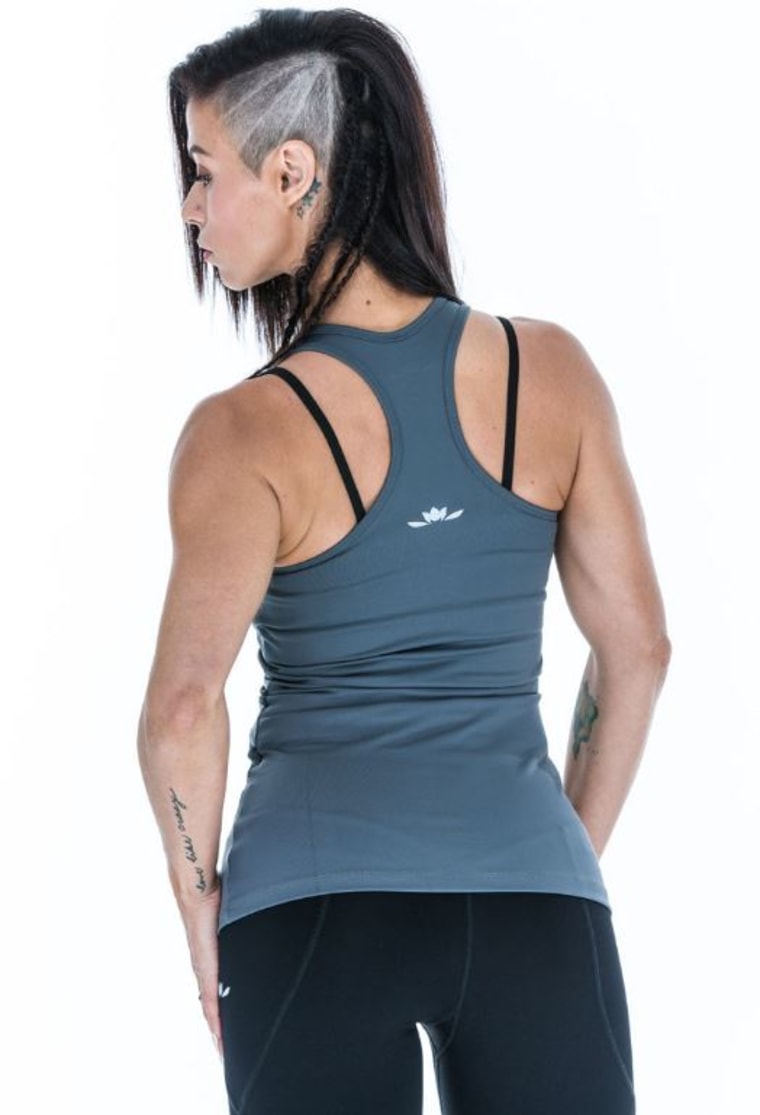Shopping is supposed to be fun, right? That's not always the case if you're a woman shopping for workout clothing. You could spend hours at Target or Macy's trying to find a sports bra that fits, leggings that aren't seemingly designed to draw attention to your bottom, or styles that don't feed into gender stereotypes.
A number of entrepreneurial women are addressing the dire lack of diversity in sportswear for women with brands of their own. Focused on everything from sizing to social causes, these women are in it to win it.
Run Like a Girl
Sally Bergesen, founder and CEO of Oiselle says that she launched the running apparel brand because she saw so much lacking from major sportswear brands.
"Historically, running apparel has been offered by shoe companies. They may be great at making shoes, but not so great at making apparel," Bergesen told NBC News. "I was looking for great fitting high-quality running shorts and couldn't find any they weren't poofy, billowy, and only available in awful colors.”
Bergesen also perceived flaws in the types of leggings typically available to runners.
"Our culture tends to celebrate showing off your [behind], and there's nothing wrong with that, but it's a blind spot in the industry," Bergesen added.
It's Not 'Plus-Size,' It's Normal
Yet another blind spot revolves around sizing, namely sizes that suit women bigger than a size 6. Some big brands, like Nike (which recently launched its plus size line) have been trying to step up their game here, but some desire a more specialized approach.
"The majority of American women are what we call 'plus size,' said Micki Krimmel, Founder of Superfit Hero. "Most brands end at a size 12. I wanted to create a brand that didn't make that distinction.”

Krimmel, a former competitive roller derby player, raised over $55,000 to launch Superfit Hero, which designs size-inclusive workout leggings ranging from a size XS to 4XL. Each piece is customized based on the size.
"Sizing is different for plus sizes, [requiring] a higher rise and a high waistband," said Krimmel, adding that “you can't just take a size small or medium and simply grade up or down" to accommodate a bigger body, as that throws off the ratio. "Not every 2XL or 3XL woman is 6 feet tall."
It's these sorts of nuances that big brands haven't quite grasped — probably because it’s time consuming.
"Brands are putting stuff out so quickly to respond to trends and not taking the time to establish a great fit," asserted Krimmel. "It's not in the interest of a fast fashion brand to make sure of that perfect fit for every shape."
Inspired by Their Own Wants
Much of the time, these sportswear entrepreneurs are driven to create their own brands because they themselves desperately want a product that no one else is making.
Alecia Elsasser, founder of RipSkirt Hawaii, wanted a swimsuit cover-up that was neither "frumpy" nor "trying to be sexy," and that could transition well from in the pool to out on the town.

"I wanted something cute and practical for women who actually get in the pool and swim laps, or play in the water with their kids or grandkids, [and also wear] if you want to go to a restaurant."
Leigh Cockram, owner/inventor at RaesWear, launched the brand because she wanted a functional pocket that didn't get in the way of her run.
"The idea for my clothing line came to life out of necessity for me to have a safe, secure, and discreet way of storing my phone, keys, money, and ID in my athletic pants when running outdoors," said Cockram. "In 2013, I filed my first patent application and started creating hands-free athletic apparel for the busy, multi-tasking, modern woman."
Valleau Apparel was founded by Katie Valleau because she wanted a sports bra that could also function as swimwear.
"Each sports bra can be worn as a bathing suit top for leisure or water fitness activities," Valleau said, adding that the brand was helped created by a Kickstarter campaign that raised over $41,000.
And Sarah Buxton founded TUTUBlue after a melanoma scare that inspired her to design full-coverage beach suits.
"My doctors told me I couldn’t go in the sun, but I knew that wasn’t an option for me because I love to be outdoors and active," said Buxton.
Defying Gender Stereotypes
Another issue women have to tackle is that of sportswear being overtly feminine or girly.
Megan Johnston, MFA fashion design student and graduate student researcher at UC Davis notes that the women's sportswear market has been stuck in a “shrink it and pink it" mentality.
"The market is oversaturated with purples, teals and floral prints," said Johnston, who is currently designing and developing women’s climbing clothing that includes "a wider array of colors."
Briana Holland, CEO and founder of bre33 recognizes a lack of diversity in the cuts of mainstream women's sportswear, finding them to be mostly "tight and frilly." Bre33's tagline, "Cut Differently," embodies the brand's mission.
"The clothes are cut differently: longer/looser/[with a] freed up fit, but also the women themselves are, too," said Holland. "These women are the types who are not afraid to break barriers — or break a nail, for that matter. They like to be comfortable and are not into the flashy items."
Engaging Personally and for a Greater Good
Big brands may do a fine job of connecting with fans on social media. But there's a difference between reaching an audience and resonating with a person like you. These brands take time and care to establish meaningful relationships and trust with their customers.
"I've blogged about my own body insecurities, and the response from other women is overwhelming," said Lea Leopold, co-owner and creator of Zuma Blu, which donates 10 percent of its annual profits to bullying prevention charities. "It's opened some public dialogue, but mostly women reached out to me privately to share stories they've never shared with anyone else. A big brand can’t make a connection like that.”

Izzy Seely, a former gymnast and exercise psychologist, founded Iron Lily with a similar desire.
"I took my love for gymnastics and sports and created a women’s activewear brand with something to say," said Seely. "I wanted to create a platform for all women to finally be able to express who they are — free from shame or ridicule."
‘Hey, Where’d You Get Those Leggings?’
You may be wondering how these small, mainly e-commerce-based brands compete against the big brands with their mega budgets. Social media is a big part of it, but so is good old-fashioned word-of-mouth marketing.
"Never underestimate the power of women telling women what they like," said RipSkirt's Elsasser. "Women are social creatures. We like to connect and bond. We are taking care of each other all over the internet. "
So, while these fledgling brands suggest that the sports apparel giants aren't addressing women's needs as thoroughly as they could — they're also proving that they don't have to: Women have got it covered.
